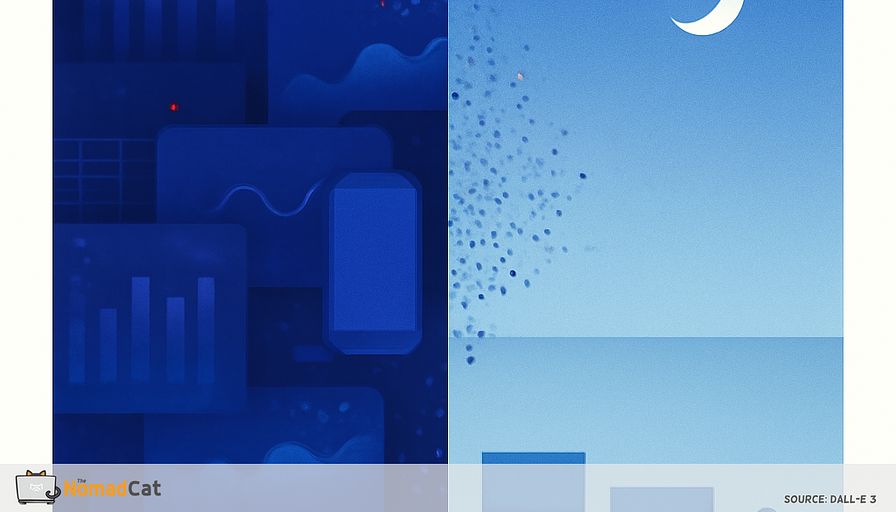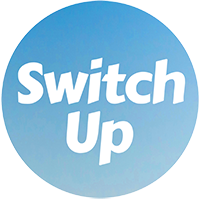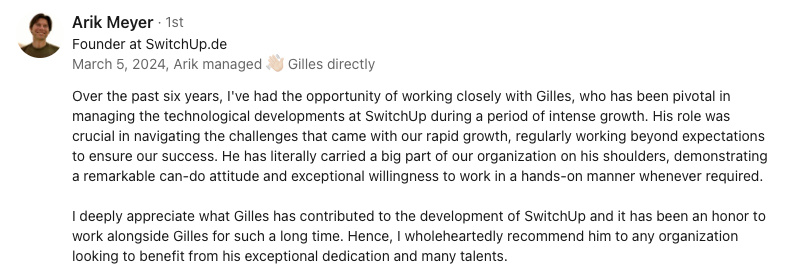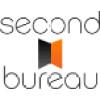Abstract:
The article explores how the tech industry’s comfort with dashboards and constant measurement often leads professionals to obsessively track their finances, a habit that can undermine the minimalist peace they seek. It highlights the hidden stresses of over-monitoring money—such as anxiety, decision paralysis, and strain on relationships—exacerbated by tech culture’s emphasis on comparison and optimization. Drawing on real stories from tech professionals who find themselves checking balances before breakfast or unable to relax without a spreadsheet, the piece shows that these habits persist even after major lifestyle changes. Instead, the article advocates for minimalist financial routines: using simple dashboards, limiting reviews to monthly or quarterly intervals, and focusing on qualitative signals like calmness and value alignment rather than peer benchmarks or perfect numbers. It offers practical steps, such as a three-number dashboard and reflective check-ins, to help readers define their own sense of “enough” and shift from compulsive tracking to genuine financial well-being. Ultimately, the article argues that true peace with money comes from letting go of constant measurement, trusting personal values, and embracing simplicity—allowing money management to support, rather than dominate, a meaningful life.
Money dashboards and tracking apps often feel like second nature to tech professionals. There’s a certain comfort in seeing numbers line up, charts moving as expected. But constant measurement—a norm in tech—can sneak into everyday life, even when you’re aiming for simplicity. Instead of feeling peaceful, all this tracking sometimes adds stress, especially when comparisons with others creep in.
This article explores the hidden side of measuring money too much, especially for those drawn to minimalism and independent work. As someone who shifted from a steady CTO role in Berlin to freelancing in Lisbon, I quickly learned that variable income changes how you think about every euro. The urge to track every cent is even stronger when paychecks aren’t predictable. My background in fundamental physics makes me want to measure everything, but honestly, sometimes less data really is more.
We’ll look at why dashboards feel so familiar, how habits of comparison linger, and what happens when tracking every cent stops helping and starts creating tension. I’ll share real stories—like lying awake in Berlin, refreshing my banking app at 2 a.m.—and how this can affect downtime, relationships, and even sleep. Still, simple routines offer hope: minimalism can shift the focus from chasing numbers to finding clarity and well-being, even when your income jumps around.
Key topics:
- Why dashboards are so hard to put aside in tech fields
- How obsessive tracking leads to more anxiety and less enjoyment
- Simple routines and hacks for healthier money awareness, even with variable income
- Warning signs that tracking hurts more than helps
- Streamlined dashboards and signs of real peace with money
- Ways to step away from peer benchmarks and trust your own sense of “enough”
If you check balances before breakfast or feel uneasy without a spreadsheet open, you’re not alone. Read on to see how tracking less might bring more freedom—and how a minimalist style can calm your relationship with money, even when your finances are anything but steady.
The hidden cost of over-measuring money
Why dashboards feel like home in tech
For many in tech, dashboards are more than just tools. There’s comfort in neat graphs and ready numbers, each suggesting control. Years in high-pressure roles make tracking feel normal. But while it seems harmless, this habit can quietly work against even the biggest fans of simplicity. The urge to optimize every detail is part of the job, and dashboards are hard to let go. It’s not only habit; tech culture reinforces it. People naturally compare themselves to others, not just their own past results. For high-achievers in tech, this means extra vulnerability to stress from always checking up. I’ve seen it everywhere—from Shanghai to Berlin—this addiction to dashboards gets in the way of the simple peace we’re looking for.
When comparison becomes a habit
Leaving a fast-paced environment doesn’t mean the habits just disappear. Picture an evening at home, scrolling through sites just to “see where things stand.” Suddenly, there’s a reminder of others’ salaries, net worth, or big wins. Tech culture is full of comparisons, and digital platforms make it constant. Checking this data can fuel anxiety, even if your finances are actually stable. Salary transparency may be meant to help, but it often just brings more stress. Surveys say more than half in tech feel anxious when comparing pay. Even a comfortable financial picture can start to feel shaky after too many comparisons. Sometimes, I find myself thinking in French when I review my finances—“est-ce que c’est assez?” instead of “Is it enough?”
Old habits in a new lifestyle
Just changing locations or lifestyles doesn’t erase tracking habits. When I moved from Berlin to Lisbon, I thought my money worries would fade with the slower pace. But I still found myself checking dashboards every morning, even with fewer expenses. Oddly, more data didn’t mean more calm. The urge to watch every cent followed me, even after leaving the city for the quiet of the Lisbon countryside. Online forums are full of stories about people who thought life would be simpler but still feel hooked on monitoring money. Old routines from high-pressure jobs stick, making it hard to truly relax into a simpler financial life.
When more data brings less calm
People who check finances more often are at risk for more anxiety. In tech, with all the tools ready to track every detail, this cycle is even stronger. Myopic loss aversion means every little down-tick can feel urgent, even if the big picture is stable. It can become a routine—checking balances as soon as you wake up. I remember lying awake in Berlin, refreshing my banking app at 2 a.m., convinced I’d missed something important. Over time, this habit can turn small bumps into big worries, seeping into every area of life.
The ripple effects of obsessive tracking
Compulsive tracking doesn’t end at the workday; it can take over weekends, evenings, and relationships. Rather than clearing things up, it causes confusion and leads to decision paralysis. I’ve seen downtime ruined by thoughts of numbers and budgets, tension in relationships when tracking takes over meaningful moments, and trouble relaxing—always feeling the need to check or adjust something. The quiet of the Lisbon countryside finally drowned out the constant mental noise of spreadsheets, but it took time. Searching for control can accidentally create stress.
The minimalist’s paradox
For minimalists, the need to control every detail can undo the very freedom and peace that a simple life should bring. The more you try to manage, the harder it gets to keep things light. A minimalist approach—where peace is more valued than perfect tracking—often brings better results.
Minimalist financial awareness for more peace
Why less tracking can be better
There’s good evidence that pulling back from daily money checking can improve financial health and reduce stress. One insight from my time running a cross-border e-commerce platform in Shanghai: even with daily sales data, the biggest gains came from monthly reviews, not constant monitoring. Monthly or quarterly check-ins are often enough to spot trends and catch problems, without getting lost in details. These fixed schedules—like reviewing your budget once a month or checking savings goals every quarter—balance awareness with peace of mind. Studies link these reviews to higher financial well-being and less worry. Minimalist routines make this even smoother, turning chores into quick check-ins.
Some typical review intervals:
- Monthly: Budget, bills, and cash flow
- Quarterly: Savings, investments, and credit
- Annually: Big-picture planning
This keeps money management sustainable—no need to let it take over everyday life.
Mini-framework: Budgeting for variable incomeWhen your income jumps around, you need a system that flexes. Here’s my three-bucket method (learned the hard way after my first freelance year in Lisbon):
- Essentials: rent, food, utilities, insurance
- Wants: eating out, hobbies, subscriptions
- Savings/debt: emergency fund, retirement, loans
Each month, I pay myself a “salary” from my business account into my personal account, based on the lowest income month from the past year. The rest goes into a buffer. This way, I avoid the rollercoaster of feast and famine.
Simple tools, big-picture clarity
Minimalist approaches—a one-page dashboard or short list—keep the spotlight on key things. Instead of page after page of data, a simple summary is enough. It might show:
- Monthly income and expenses
- Savings progress
- A list of important financial tasks
Letting go of exact numbers feels odd at first, but it’s meant to reduce stress, not add to it. No need to make it complicated.
Getting comfortable with “good enough”
Relying on precision is hard to give up, especially with a physics background. But over time, I saw my stress level fall as I stepped back. The focus can shift from “Did I overspend this week?” to bigger questions like, “Am I living within my means and enjoying life?” With practice, the need to know every detail fades.
Knowing when tracking goes too far
Warning signs
Ongoing worry, guilt, or constant money thoughts signal that tracking may be unhelpful. If checking accounts or updating sheets affects routines or relationships, it could be time to pause. After co-founding a ready-to-wear company, I noticed my stress levels dropped when I switched from daily to monthly financial reviews. Watch for:
- Anxiety or guilt after every review
- Financial tracking taking priority over friends, family, or hobbies
- Losing sleep or peace due to money worries
- More arguments about money
Sometimes, tracking just turns to noise.
When tracking stops helping
When tracking brings confusion or indecision instead of progress, things need to change. Minimalists often ask, “Is this habit really helping?” If it feels like a drag or decisions are harder, try doing less. Many can restore balance with a quick audit and a few changes.
Restoring balance with less
For strong symptoms or mental health concerns, outside help can make a big difference. But often, a quick financial reset—focusing on essentials—restores peace. Simplifying brings clear benefits and opens up space for other parts of life.
Building simple, value-driven dashboards
What to include in a minimalist dashboard
A minimalist dashboard shows a clean, quick picture. Usually, it’s just three numbers: your buffer (emergency fund), committed expenses (regular outflows), and a “fun or emergency” fund for surprises. For those who like structure, try this short list:
- Buffer: how much is set aside for emergencies (I call this “the Buffer Rule”—always keep three months of expenses in a separate account. This was my safety net during my first year freelancing in Lisbon.)
- Committed expenses: key monthly costs
- Fun/emergency fund: money for surprises or small treats
This covers most decisions without too much complexity.
Visual cues and qualitative signals
Visual tools make dashboards easier to use. A traffic-light color code (green, yellow, red) shows the state of each item at a glance:
- Buffer: green if secure, yellow if dipping, red if almost empty
- Expenses: green if stable, yellow if rising, red if over budget
- Fun/emergency: green if healthy, yellow if low, red if empty
Some also keep a brief money journal each month to capture how spending felt. These notes make the numbers more meaningful.
Clarity over perfection
The goal is clarity, not chasing the perfect sheet. Cutting out extras makes it easier to decide and reduces mental load. This helps you feel more confident and less stressed. It’s a much better fit for people who like simple tools rather than complicated systems.
Why keeping it simple works
Less stress, more confidence
Minimal dashboards can reduce stress and build confidence. You don’t need to track every cent to know where you stand. A quick look is usually enough. Many people say, “It just feels lighter—like my money isn’t running my day.”
Motivation and better habits at a glance
Having all key information in one place helps motivation. Minimalist dashboards show quickly if you’re off track or need to save more for fun. A yellow warning is often enough to prompt a change before things get stressful. Money fades to the background, leaving more room for life.
More mental space for what matters
For those in tech, simple dashboards mean less mental clutter. Money management becomes easier and stops dominating every decision. It’s not just about numbers—emotions and gut feeling count too.
Qualitative signals of real financial well-being
Everyday signs of “enough”
Financial health is not always on a chart. Signs like restful sleep, feeling free to take breaks, and saying no to unwanted projects show true well-being. Some other signs:
- Calmness about bills
- Guilt-free downtime
- Choices based on personal values
- Security facing surprise expenses
These moments often say more than any metric.
Living by your own values
Peace comes when finances fit life, not someone else’s idea of success. True happiness grows from using money to fit your goals, instead of matching someone else’s milestones. Look for:
- Confidence to handle emergencies
- Enjoying free time
- Spending in line with priorities
- Feeling content with what you have
This sort of alignment often brings real, lasting satisfaction.
Finding clarity by letting go
Stories from tech professionals show that backing off strict tracking brings more calm. I’ve heard from friends who moved from Beijing to Berlin: their financial routines changed completely, and so did their stress levels. Qualitative reviews—like basic journaling—often lead to greater satisfaction and less stress. Letting go of endless numbers can mean finding what really matters. Still, comparison with others can be a hard pattern to break.
Your progress matters more than peer benchmarks
Breaking the comparison cycle
Scrolling through professional sites can lead to doubt. Comparing yourself to others online creates stress and can kill motivation. It’s an easy trap:
- Feeling behind when you’re not
- Second-guessing decisions
- Losing track of your values
Marking progress in your own way is much healthier.
Building personal markers of success
Minimalists in tech benefit from defining their own ideas of success—like feeling free to take breaks or making spending choices that match their values. Focusing on these personal signals boosts satisfaction. Some ideas:
- Taking time off comfortably
- Spending in line with your true wants
- Feeling secure and content
This change in focus supports a more rewarding and sustainable approach.
Intrinsic progress for lasting satisfaction
Looking to how money supports your own life—not someone else’s—sets up lasting happiness. A personal sense of “enough” matters more than someone else’s scorecard. Simple routines help build these habits and keep things in balance.
Simple review rhythms for minimalist money management
Monthly, quarterly, annual: keep it light
Monthly reviews usually do the job for most people. Looking over bills, cash, and trends once a month is enough—no need for daily tracking. Every quarter, check savings, investments, and value alignment. Annually, take a step back and look at the big picture. This rhythm avoids overwhelm. Simple lists or dashboards make it fast.
Sample review rhythm:
- Monthly: budget, bills, cash flow
- Quarterly: savings, investments, values
- Annually: long-term planning
Research shows this spacing encourages better habits and less stress than checking every day.
Short, focused checklists keep reviews easy. For example, a checklist might include income, main expenses, debts, savings, and a net worth estimate. For perfectionists, these help avoid overthinking and keep the process moving.
For tech professionals used to chasing perfect numbers, these spaced-out, light reviews are much easier and more effective over time. What should you ask yourself during these?
Questions for a minimalist gut-check
Instead of tallying every small purchase, reviewers might ask, “Am I calm about money this month?” or “Did I make choices just for the income?” Some prompts:
- Was I at ease with bills and spending?
- Did I ever feel pressure to spend or work against my values?
- Am I getting the freedom I want from my routine?
Answering these questions can catch trouble early. If the process ever feels too heavy, simplify even more. Over time, regular check-ins build trust in your chosen system.
Each reflection adds to this trust. You worry less about outside approval and more about what works for you. Now, what steps help define and keep your sense of “enough”?
Practical steps for defining and maintaining enough
My 3-step minimalist audit
A fast reset only takes about 30 minutes. Here’s my go-to checklist:
1. List total income (even if it’s variable—use the lowest month as your baseline)
2. Sort expenses into needs, wants, and savings/debt
3. Check your buffer—do you have at least three months of expenses set aside?
You can figure out net worth, but don’t aim for perfect numbers—focus on what matters. This simple overview clears away noise. Then, use broad buckets to sort everything.
Try sorting into three groups:
- Needs: rent, food, utilities, insurance
- Wants: eating out, hobbies, subscriptions
- Savings/debt: emergency fund, retirement, loans
Keep reviews regular, but light. If the process feels like a chore, drop unnecessary steps. Minimalist templates or a single dashboard keep things easy to update.
Exercises to clarify your enough
Listing top values and matching money choices is a good way to test if habits match goals. Use a stop-start-continue list: note what to stop, what to start, and what is fine to continue. This catches patterns and points out priorities.
A daily or weekly journal, where you note whether a purchase brought joy or matched your values, can show useful trends. Check back on your “enough list” every few months as life changes—this keeps things flexible.
Moving from fast-paced cities to slower ones, the meaning of “enough” often changes. What felt vital in Berlin or Beijing may feel optional in Lisbon or the countryside. Like tidying up a closet, this keeps money management light and focused on what matters.
Finding real peace with money rarely comes from monitoring every detail. Constant measurement can turn into just another stressor—especially if you’re wired to optimize. Switching to minimalist routines with simple dashboards, spaced reviews, and value-based questions keeps money management easier and more enjoyable. This does not mean ignoring your finances, but opening space for clear decisions and more enjoyable days. Trusting your own definition of “enough” builds real freedom. So, ask yourself: are your current habits making things easier or just adding more numbers? Sometimes, the simplest routine is the most freeing. What small step could bring you closer to calm and contentment with your money?














